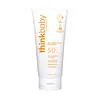What's inside
What's inside
 Key Ingredients
Key Ingredients

 Benefits
Benefits

 Concerns
Concerns

No concerns
 Ingredients Side-by-side
Ingredients Side-by-side

Zinc Oxide 23.4%
Cosmetic ColorantWater
Skin ConditioningCaprylic/Capric Triglyceride
MaskingPolyglyceryl-4 Isostearate
EmulsifyingGlycerin
HumectantHydrogenated Glyceryl Abietate
Emulsion StabilisingHexyl Laurate
EmollientCetyl Dimethicone
EmollientSorbitan Sesquioleate
EmulsifyingMagnesium Sulfate
Tocopherol
AntioxidantSodium Hyaluronate
HumectantHelianthus Annuus Seed Oil
EmollientSimmondsia Chinensis Seed Oil
EmollientOlea Europaea Fruit Oil
MaskingCitrus Paradisi Peel Oil
MaskingVaccinium Macrocarpon Seed Oil
Skin ConditioningRubus Idaeus Seed Oil
EmollientCarica Papaya Fruit Extract
Skin ConditioningHydrogenated Castor Oil
EmollientCaprylhydroxamic Acid
Triethoxycaprylylsilane
Glyceryl Caprylate
EmollientParfum
MaskingZinc Oxide 23.4%, Water, Caprylic/Capric Triglyceride, Polyglyceryl-4 Isostearate, Glycerin, Hydrogenated Glyceryl Abietate, Hexyl Laurate, Cetyl Dimethicone, Sorbitan Sesquioleate, Magnesium Sulfate, Tocopherol, Sodium Hyaluronate, Helianthus Annuus Seed Oil, Simmondsia Chinensis Seed Oil, Olea Europaea Fruit Oil, Citrus Paradisi Peel Oil, Vaccinium Macrocarpon Seed Oil, Rubus Idaeus Seed Oil, Carica Papaya Fruit Extract, Hydrogenated Castor Oil, Caprylhydroxamic Acid, Triethoxycaprylylsilane, Glyceryl Caprylate, Parfum
 Reviews
Reviews

Ingredients Explained
These ingredients are found in both products.
Ingredients higher up in an ingredient list are typically present in a larger amount.
Glyceryl Caprylate comes from glycerin and caprylic acid, a fatty acid from coconut. It has emollient and emulsifier properties.
As an emollient, it helps hydrate your skin. Emollients work by creating a barrier on your skin to trap moisture in, helping to keep your skin soft and smooth.
On the other hand, emulsifiers prevent ingredients (such as oil and water) from separating.
Learn more about Glyceryl CaprylateTocopherol (also known as Vitamin E) is a common antioxidant used to help protect the skin from free-radicals and strengthen the skin barrier. It's also fat soluble - this means our skin is great at absorbing it.
Vitamin E also helps keep your natural skin lipids healthy. Your lipid skin barrier naturally consists of lipids, ceramides, and fatty acids. Vitamin E offers extra protection for your skin’s lipid barrier, keeping your skin healthy and nourished.
Another benefit is a bit of UV protection. Vitamin E helps reduce the damage caused by UVB rays. (It should not replace your sunscreen). Combining it with Vitamin C can decrease sunburned cells and hyperpigmentation after UV exposure.
You might have noticed Vitamin E + C often paired together. This is because it is great at stabilizing Vitamin C. Using the two together helps increase the effectiveness of both ingredients.
There are often claims that Vitamin E can reduce/prevent scarring, but these claims haven't been confirmed by scientific research.
Learn more about Tocopherol